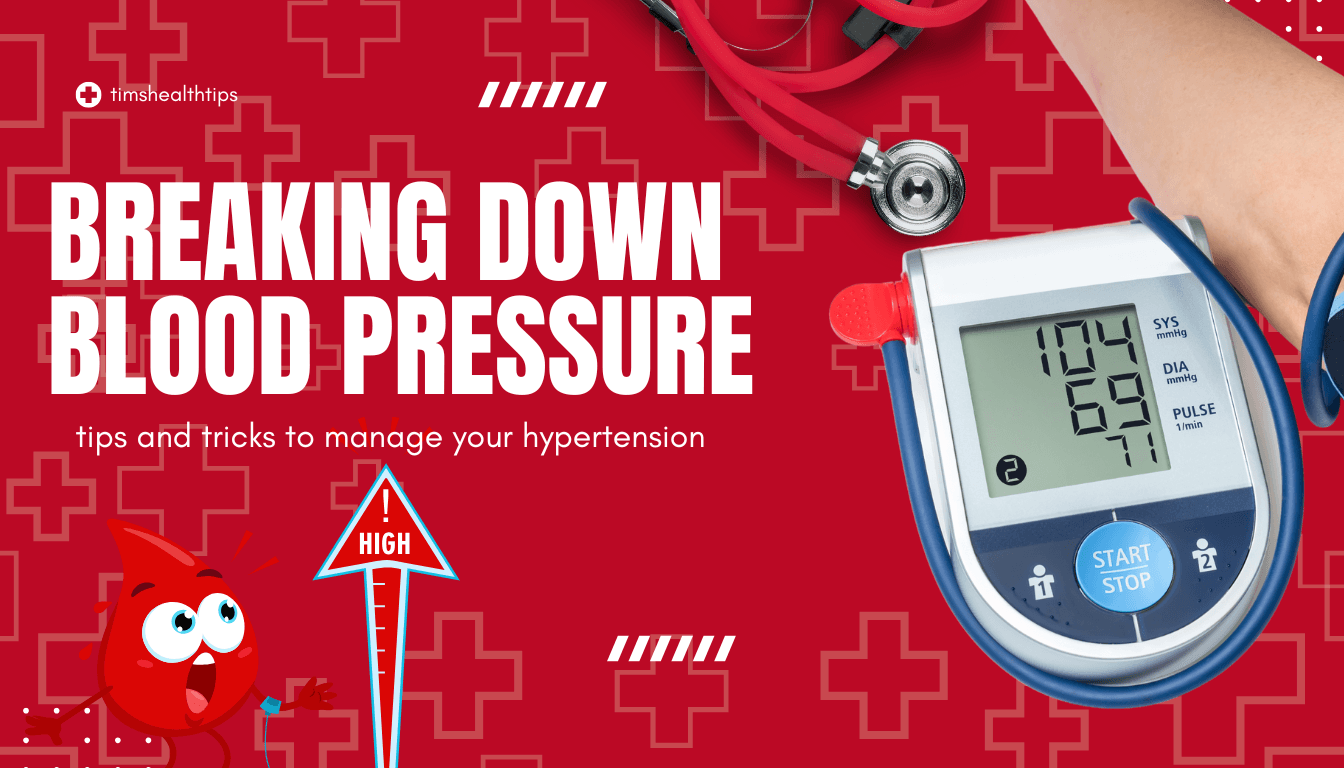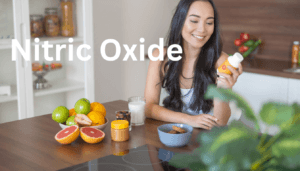Understand Hypertension: It Could Save Your Life.
Hypertension, commonly known as high blood pressure, is a condition that affects millions of people worldwide, particularly individuals over the age of 40. Left untreated, it can lead to severe health complications, including heart disease, stroke, and kidney failure. However, studies suggest that 4–10% of young adults (18–39 years) worldwide have hypertension. This blog explores what hypertension is, how it develops, who is at risk, what are high blood pressure symptoms and how it can be managed through medication, lifestyle changes, and diet.
What Is Hypertension?
Hypertension occurs when the force of the blood against the walls of your arteries is consistently too high. Blood pressure is measured in two numbers:
- Systolic pressure (the top number): The pressure when your heart beats.
- Diastolic pressure (the bottom number): The pressure when your heart rests between beats.
Normal blood pressure is typically around 120/80 mmHg. Hypertension is diagnosed when readings are consistently above 140/90 mmHg. Severe cases, known as hypertensive crises, may involve readings over 180/120 mm/Hg and require immediate medical attention.
How Does Hypertension Develop?
Blood pressure rises when the arteries become narrower or less flexible, forcing the heart to pump harder to circulate blood. Over time, this strain can damage blood vessels and organs. This is described as primary (essential) hypertension, and has no single specific identifiable cause. The arteries may become narrower and harden for any number of reasons.
One of the most dangerous aspects aspects of hypertension is its silent nature. In its early stages it often presents no noticeable symptoms, leading many people to remain unaware of their condition. You may feel perfectly fine but the constant pressure on your arteries is causing damage that can have long-term consequences.
Imagine a slow leaking pipe. At first, It may go unnoticed, causing no immediate problems. However, over time, the constant dripping can weaken the pipe, leading to rust , corrosion and eventually a complete rupture. Similarly , the prolonged pressure of hypertension can gradually damage the delicate inner lining of your arteries (the endothelium).
This damage creates the perfect environment for cholesterol, fat and other substances to build up, forming plaque that narrows and hardens the arteries. This process, known as atherosclerosis, further restricts the blood flow and increases pressure within the arteries, creating a vicious cycle.
As hypertension progresses it can manifest in subtle ways that often go unnoticed or are dismissed as something else. You may experience occasional headaches, nosebleeds or shortness of breath, especially during physical activity. However, these symptoms are not exclusive to hypertension and regular blood pressure checks are crucial, especially if you have any of the risk factors listed below.
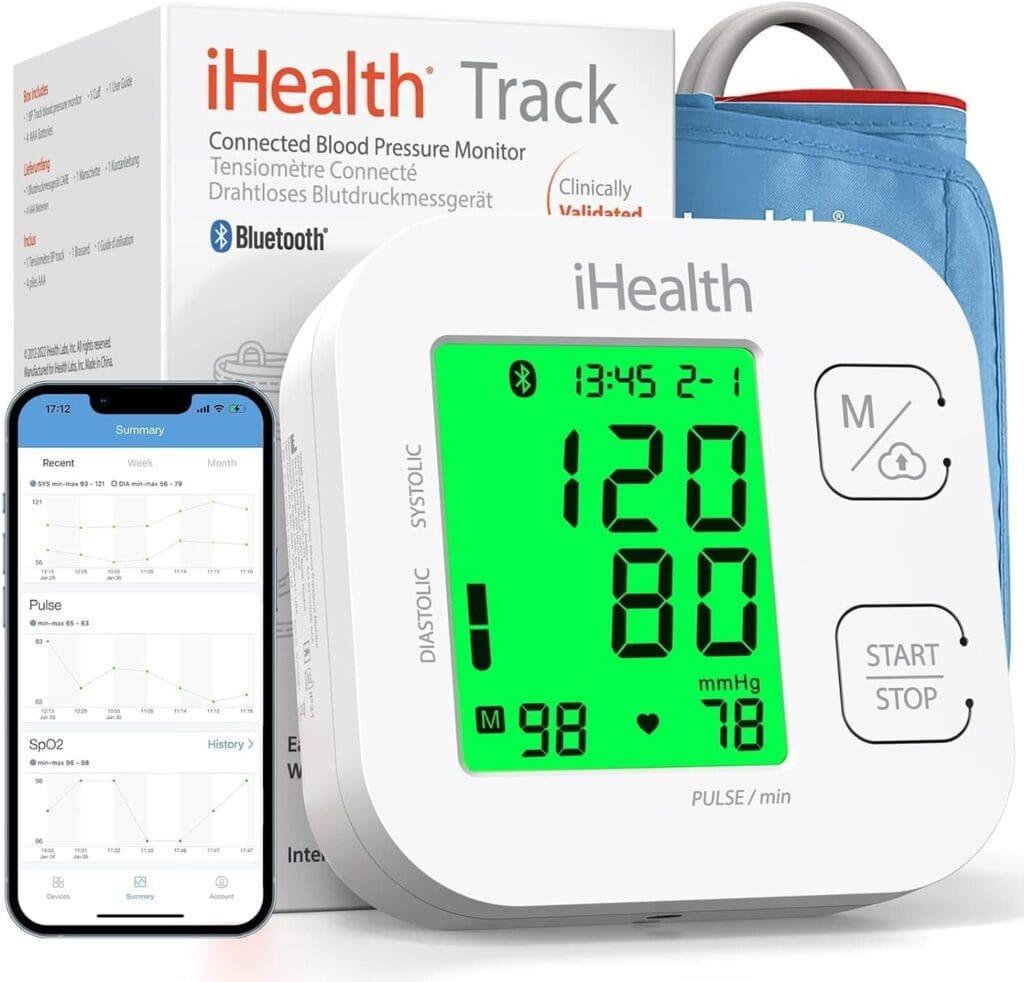
Take Control of Your Health Today! 🌟
Effortlessly monitor your blood pressure with our Large Multi-Color Backlit Display, track unlimited readings on your smartphone, and get alerts for heart rhythm disturbances instantly.
Stay informed and proactive with every heartbeat. Order your iHealth Blood Pressure Monitor from Amazon
Factors Contributing to Hypertension?
- Genetics: Family history of hypertension can increase your risk significantly.
- Age : As we age our arteries stiffen , increasing blood pressure
- Diet: High salt (sodium) intake, low potassium levels, and excessive consumption of processed foods can contribute to elevated blood pressure.
- Lifestyle: Lack of physical activity, excessive alcohol consumption, and smoking are major contributors.
- Stress: Chronic stress can lead to temporary spikes in blood pressure and, over time, can cause sustained hypertension.
- Underlying Conditions: Chronic conditions such as kidney disease, diabetes, or hormonal imbalances (like hyperthyroidism) can lead to secondary hypertension. Secondary hypertension is high blood pressure that results from an identifiable underlying condition.,
Who Is at Risk?
The risk of developing hypertension increases with age, particularly after 40. Other risk factors include:
- Obesity: Excess body weight increases strain on the heart and blood vessels.
- Smoking: Damages blood vessel walls and accelerates the hardening of arteries.
- Race: Africans, African-Americans and people of African descent are at higher risk and often experience more severe hypertension.
- Gender: Men are more likely to develop hypertension before age 55, while women are more prone after menopause.
- Sedentary Lifestyle: Physical inactivity can increase the likelihood of weight gain and high blood pressure.
Medications to Control Hypertension
Doctors may prescribe one or more of the following medications to manage hypertension effectively:
- ACE Inhibitors: These relax blood vessels by blocking the production of angiotensin, a hormone that causes blood vessels to narrow. Examples include enalapril and lisinopril.
- Beta-Blockers: Reduce heart rate and the heart’s workload, helping to lower blood pressure. Examples include metoprolol and atenolol.
- Calcium Channel Blockers: Prevent calcium from entering heart and blood vessel cells, which helps to relax blood vessels. Examples include amlodipine and diltiazem.
- Diuretics: Help the body eliminate excess salt and water, reducing fluid in the blood vessels. Examples include hydrochlorothiazide and furosemide.
- Angiotensin II Receptor Blockers (ARBs): Block the action of angiotensin, allowing blood vessels to stay open. Examples include losartan and valsartan.
Contraindications (situations where a drug should not be used)
Each drug comes with potential contraindications.
- ACE Inhibitors: Avoid in pregnancy or severe kidney disease due to potential harm to the fetus or further kidney damage.
- Beta-Blockers: Not recommended for people with asthma or severe bradycardia (slow heart rate) as they can exacerbate these conditions.
- Calcium Channel Blockers: May cause swelling in the extremities or interact with grapefruit, which can increase the medication’s effects.
- Diuretics: Can lead to low potassium levels, which might cause muscle weakness or irregular heartbeat.
- ARBs: Should be used cautiously in individuals with kidney impairment.
The Role of Nitric Oxide
Nitric oxide (NO) is a molecule naturally produced in the body that helps relax blood vessels, improving blood flow and reducing blood pressure. Foods rich in nitrates, such as beets, spinach, and arugula, can boost nitric oxide levels. Supplements like L-arginine and L-citrulline also support nitric oxide production and may benefit those with hypertension.
Studies have shown that increasing nitric oxide levels can lead to significant improvements in blood pressure control and overall cardiovascular health. It also enhances endothelial function (the health of the inner lining of blood vessels), which is often compromised in hypertensive individuals.
Natural Remedies and Lifestyle Changes
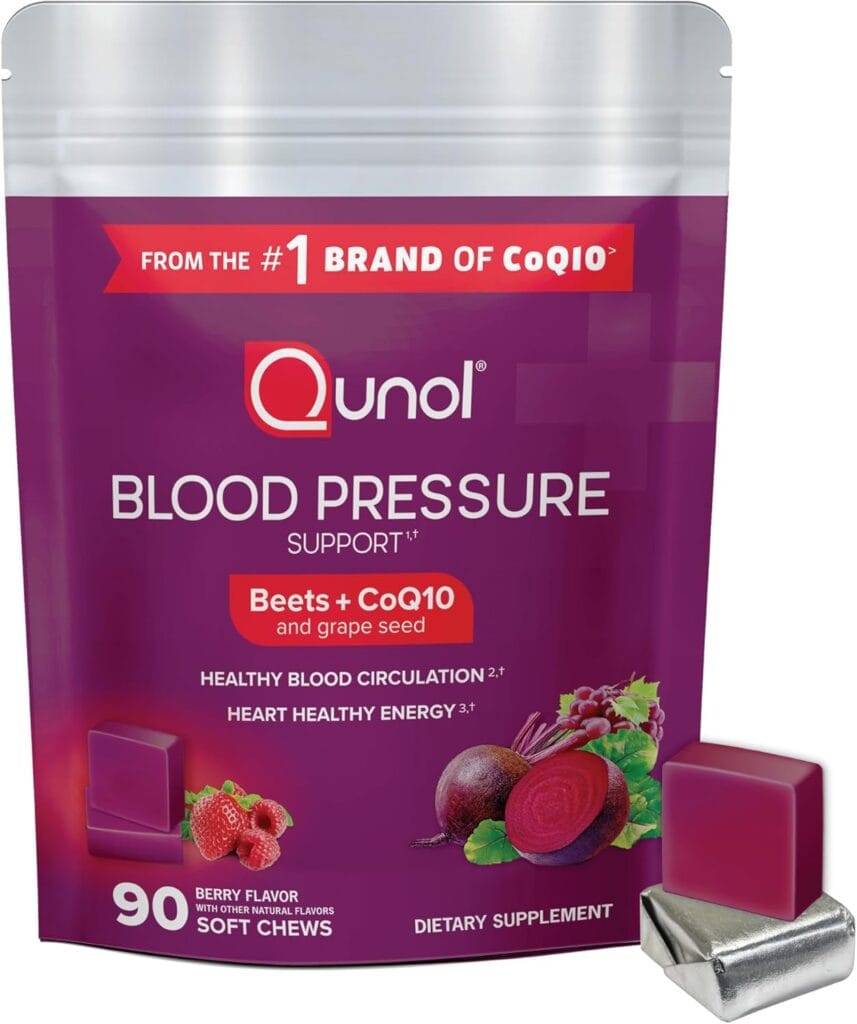
Boost Your Heart Health with Qunol Beets 3-in-1 Chews!
🌱 Packed with nitrates from beets for heart support, CoQ10 for energy and vascular health, and grape seed extract clinically proven to help maintain healthy blood pressure levels.
🍓 Enjoy the juicy berry flavor in a convenient, vegetarian soft chew from the #1 Brand of CoQ10.
👉 Feel the power of beets—try Qunol Beets today!” Available on Amazon
Proven Natural Remedies:
- Garlic: Contains allicin, which has been shown to relax blood vessels and lower blood pressure.
- Hibiscus Tea: Rich in antioxidants and natural diuretics, it has antihypertensive properties. Use the sepals for best results
- Omega-3 Fatty Acids: Found in fish oil, they improve heart health and reduce inflammation. Use wild salmon or cod.
- Magnesium: Helps relax blood vessels and regulate blood pressure. Excellent sources include nuts and seeds, vegetables and dark chocolate.
- Coenzyme Q10 (CoQ10): A powerful antioxidant that supports heart health and blood pressure regulation. Found in both plants and animals – with higher concentrations in organ meats such as heart, liver and kidney
- Nitrate Rich Foods: These produce nitric oxide which is a vasodilator that relaxes the blood vessels
Recommended Lifestyle Changes : Start By Reducing Stress
- Diet: Follow the DASH (Dietary Approaches to Stop Hypertension) diet, which emphasizes fruits, vegetables, whole grains, and lean protein while reducing sodium and processed foods.
- Exercise: Aim for at least 30 minutes of moderate activity, like walking, swimming, or cycling, five days a week.
- Stress Management: Practice mindfulness, meditation, deep breathing, or yoga to reduce stress and its impact on blood pressure.
- Quit Smoking: Smoking damages blood vessels and raises blood pressure.
- Limit Alcohol: Stick to no more than one drink per day for women and two for men.
- Weight Management: Losing even a small amount of weight can significantly lower blood pressure.
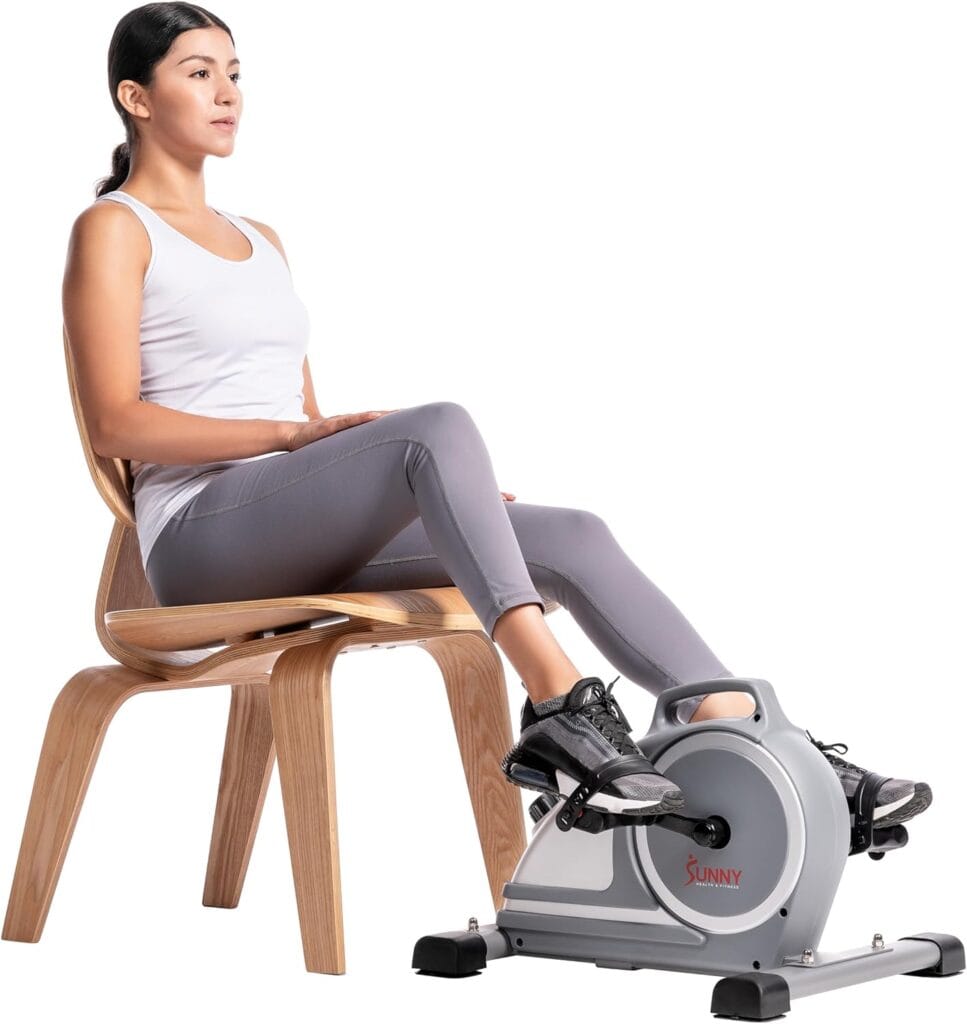
🚴♀️ Stay Active Anytime, Anywhere with the Mini Exercise Bike!
💪Boost your fitness with workouts for both legs and arms!
⚙️Adjustable magnetic resistance for smooth, low-impact rides or more challenging sessions.
🤫 Whisper-Quiet Operation:
📊 Real-time updates on speed, time, distance, and calories burned
Weekly Meal Plan for Hypertension
Day 1:
- Breakfast: Oatmeal with blueberries, chia seeds, and walnuts.
- Snack: An apple with a handful of almonds.
- Lunch: Grilled chicken salad with mixed greens, avocado, and a balsamic vinaigrette.
- Dinner: Baked salmon with quinoa and steamed broccoli.
Day 2:
- Breakfast: Whole-grain toast with avocado, a boiled egg, and a slice of tomato.
- Snack: Carrot sticks with hummus.
- Lunch: Lentil soup with a side of whole-grain crackers.
- Dinner: Stir-fried tofu with brown rice and mixed vegetables.
Day 3:
- Breakfast: Low-fat yogurt with granola, sliced banana, and a sprinkle of cinnamon.
- Snack: Celery sticks with almond butter.
- Lunch: Turkey and spinach wrap with hummus.
- Dinner: Grilled shrimp with zucchini noodles and a side of asparagus.
Day 4:
- Breakfast: Smoothie with spinach, almond milk, frozen berries, banana, and chia seeds.
- Snack: A small handful of mixed nuts.
- Lunch: Quinoa salad with chickpeas, cucumbers, cherry tomatoes, and olive oil.
- Dinner: Baked chicken breast with sweet potato and green beans.
Day 5:
- Breakfast: Scrambled eggs with spinach, tomatoes, and whole-grain toast.
- Snack: A pear with a slice of low-fat cheese.
- Lunch: Tuna salad with olive oil and lemon dressing, served on a bed of greens.
- Dinner: Grilled turkey burger on a whole-grain bun with a side of kale chips.
Day 6:
- Breakfast: Cottage cheese with sliced peaches, a drizzle of honey, and a sprinkle of flaxseeds.
- Snack: A handful of air-popped popcorn.
- Lunch: Whole-grain pasta with marinara sauce, roasted vegetables, and a side salad.
- Dinner: Baked cod with roasted Brussels sprouts and wild rice.
Day 7:
- Breakfast: Steel-cut oats with cinnamon, diced apples, and a teaspoon of honey.
- Snack: A cup of sliced cucumbers with a dash of salt and lemon.
- Lunch: Vegetable wrap with hummus, shredded carrots, and spinach, served with a side of carrot sticks.
- Dinner: Roast chicken with mashed cauliflower, sautéed spinach, and a drizzle of olive oil.
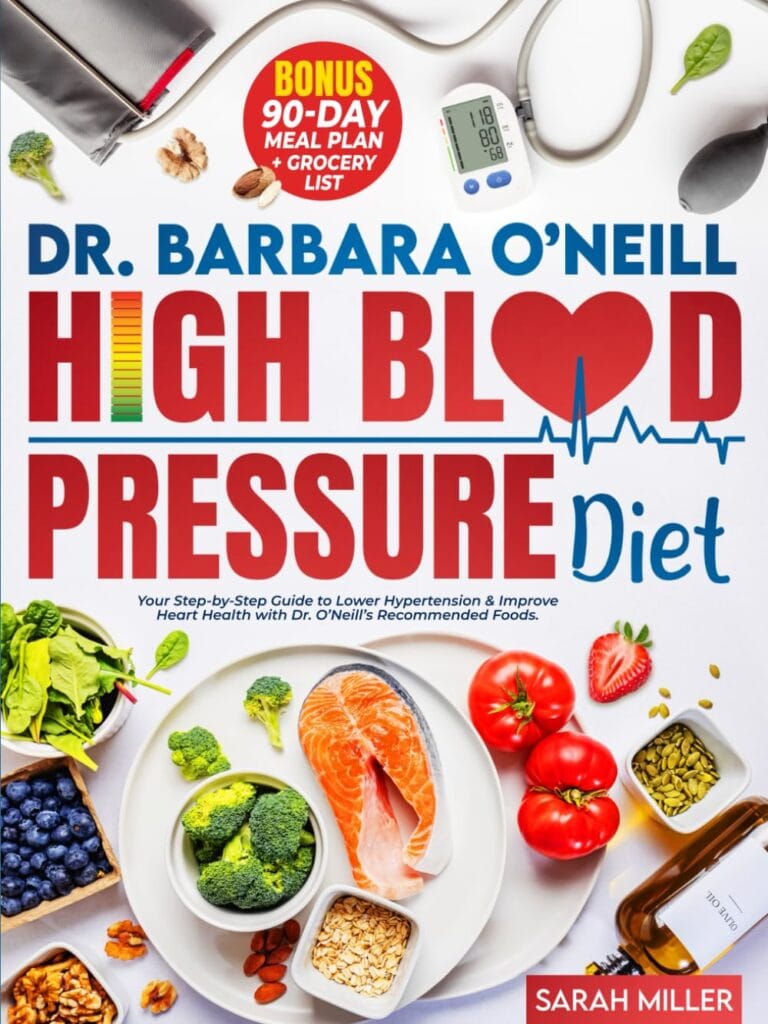
🌿 Discover the Comprehensive Guide to Lowering Hypertension and Enhancing Heart Health through simple, natural strategies.
Conclusion
Hypertension is a manageable condition, and with the right approach, seniors can lead healthy and active lives. By understanding the condition, adhering to prescribed treatments, incorporating natural remedies, and making thoughtful lifestyle and dietary changes, you can significantly lower your blood pressure and improve your overall well-being. Taking small, consistent steps each day can lead to long-term benefits for your heart and overall health.


